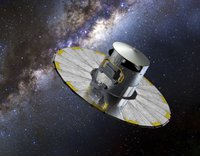The Gaia mission is in the process of mapping nearly 1% of the Milky Way’s stars----nearly a billion in total. This data set is unprecedented and provides a unique view into the formation history of our Galaxy and its associated dark matter halo. I will review results based on the most recent Gaia data release, demonstrating how the evolution of the Galaxy can be deciphered from the stellar remnants of massive satellite galaxies that merged with the Milky Way early on. This analysis is an inherently "big data" problem, and I will discuss how we are leveraging machine learning techniques to advance our understanding of the Galaxy's evolution. Our results indicate that the local dark matter is not in equilibrium, as typically assumed, and instead exhibits distinctive dynamics tied to the disruption of satellite galaxies. The updated dark matter map built from the Gaia data has ramifications for direct detection experiments, which search for the interactions of these particles in terrestrial targets.
Mapping the Milky Way's Dark Matter Halo with Gaia

Host: David Curtin

